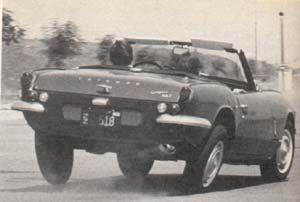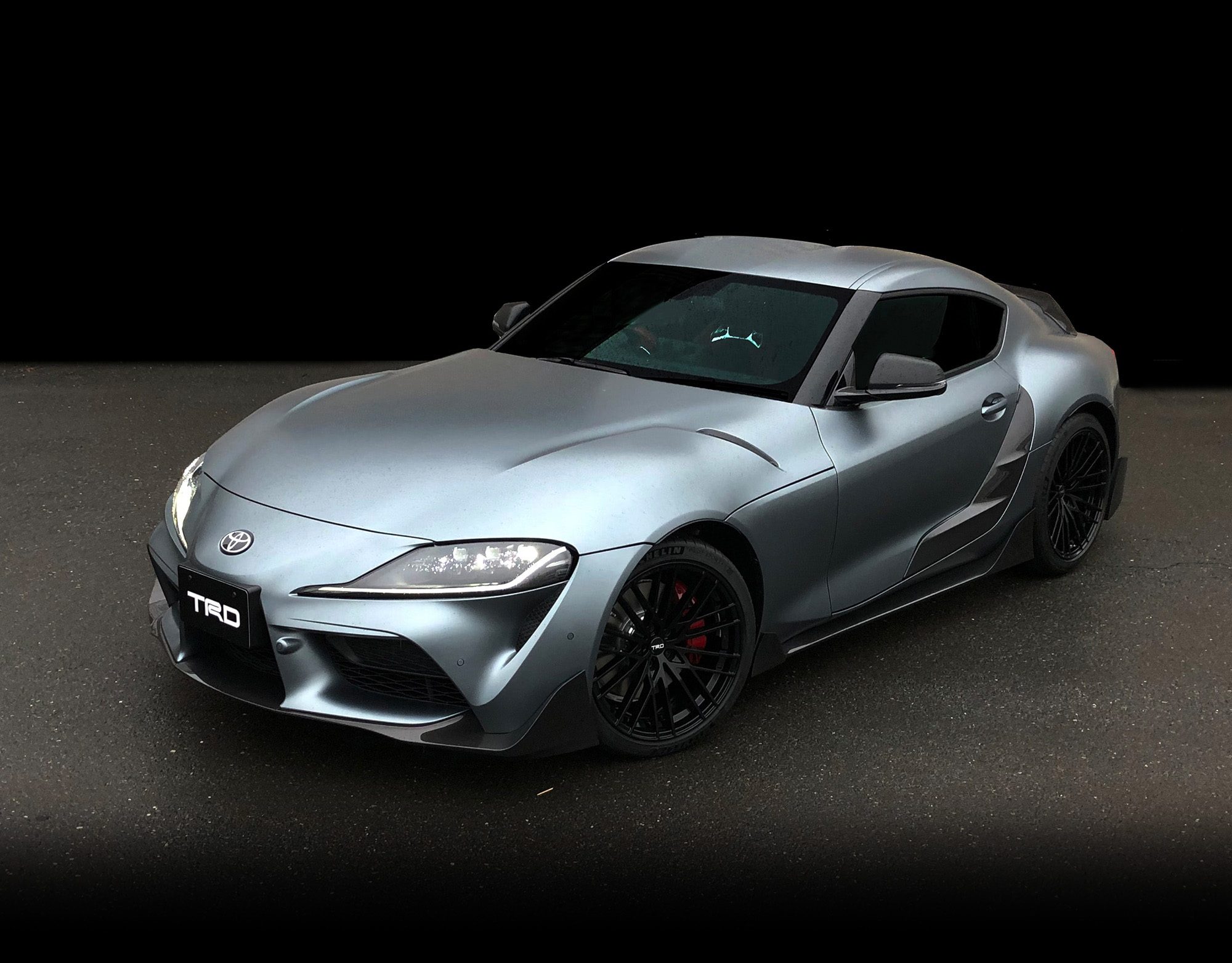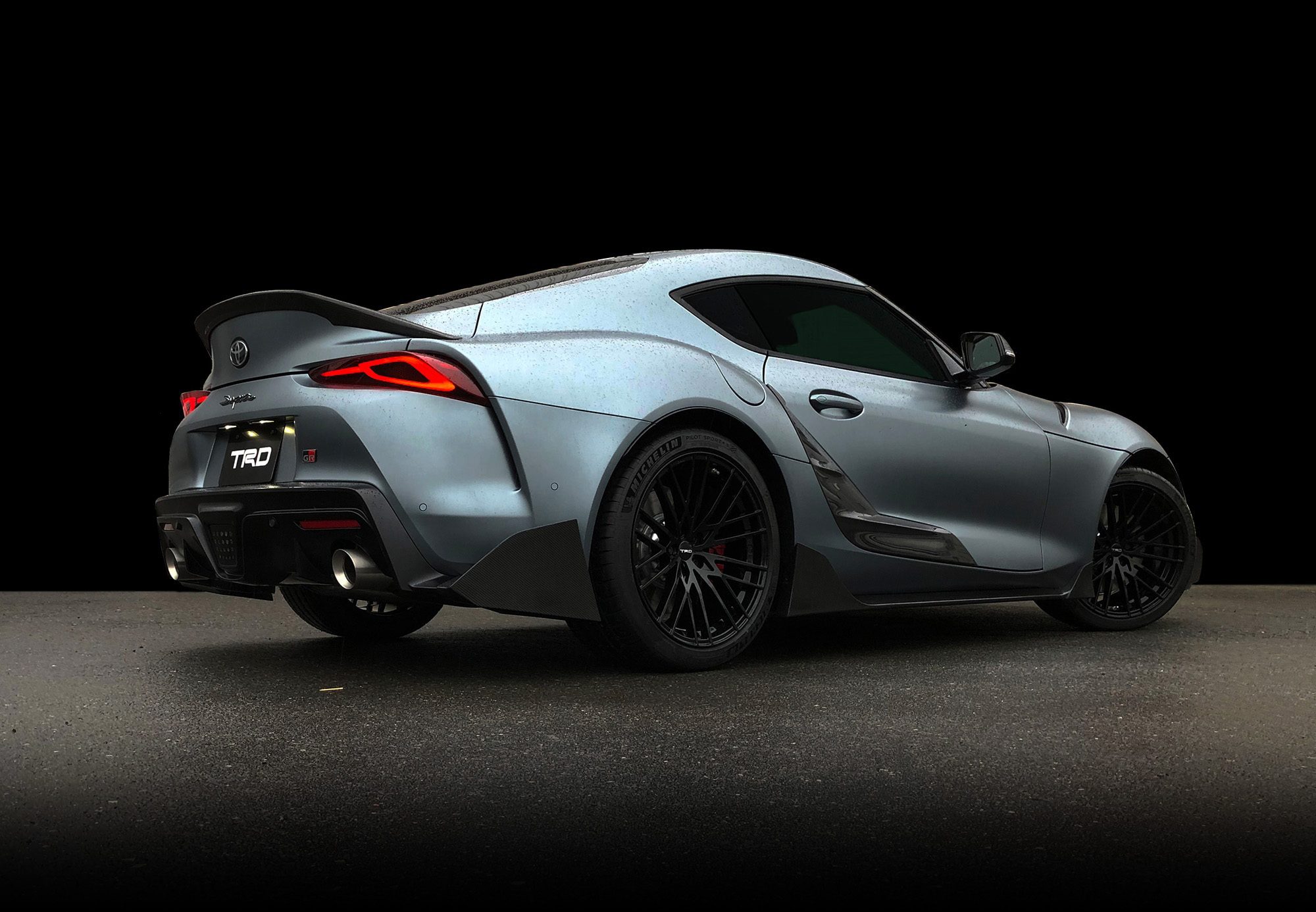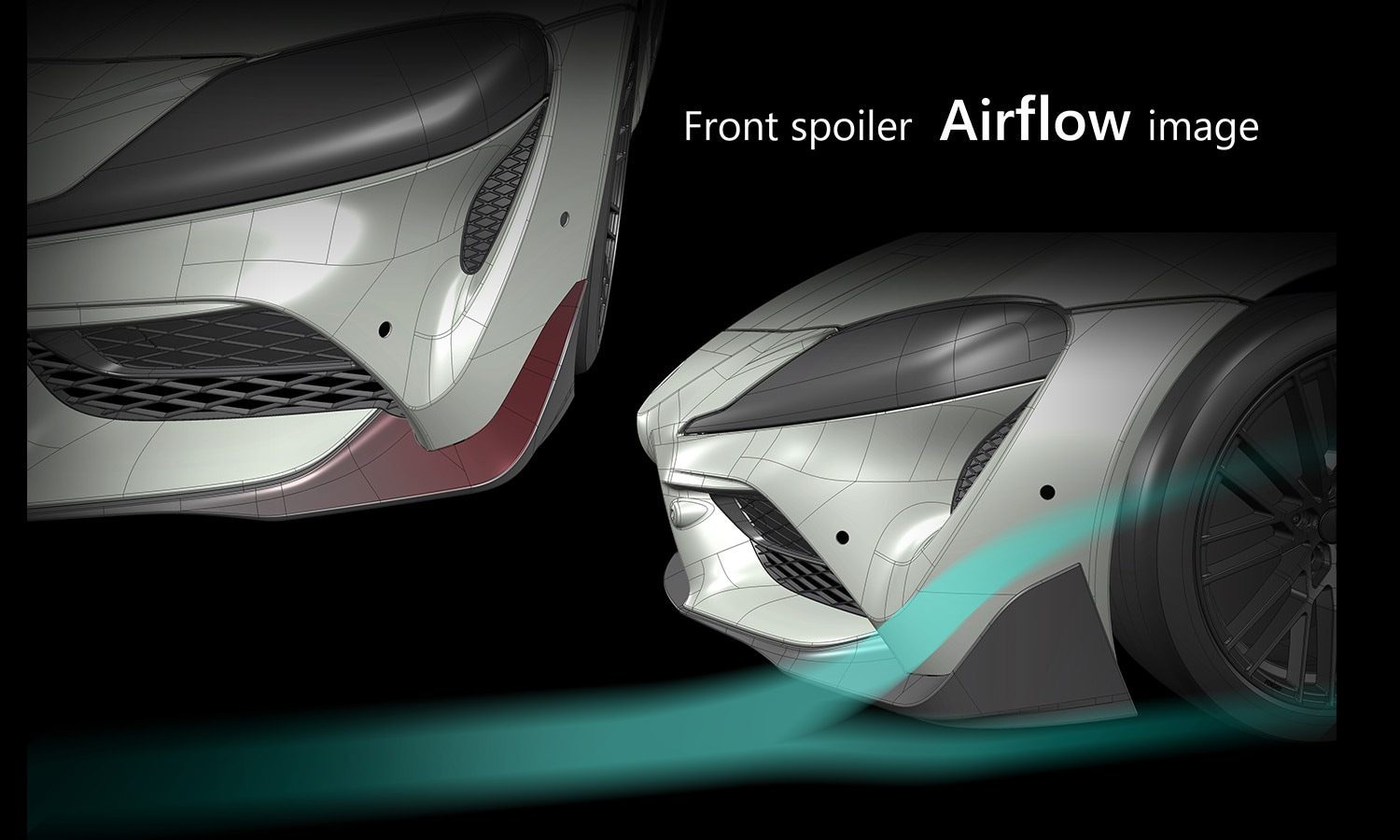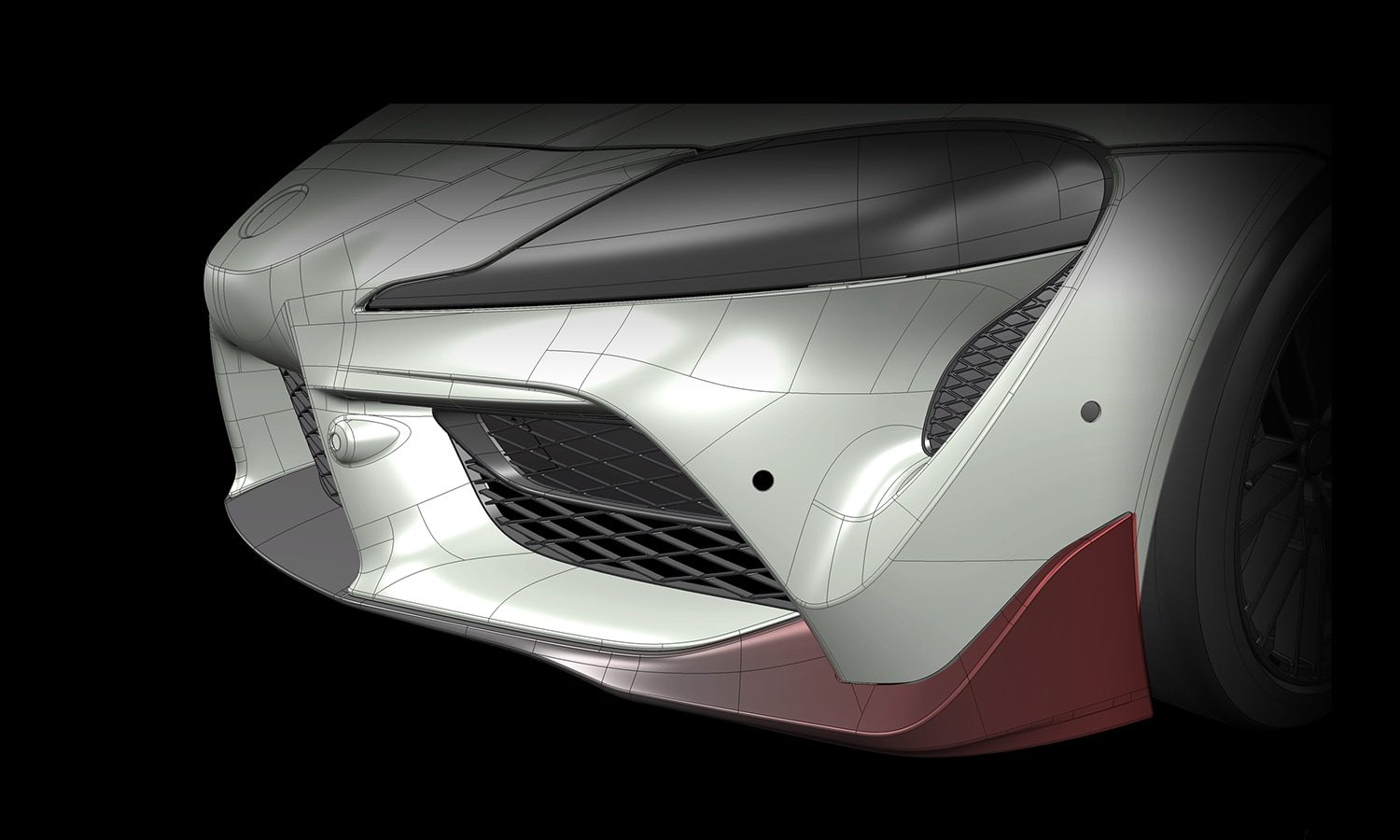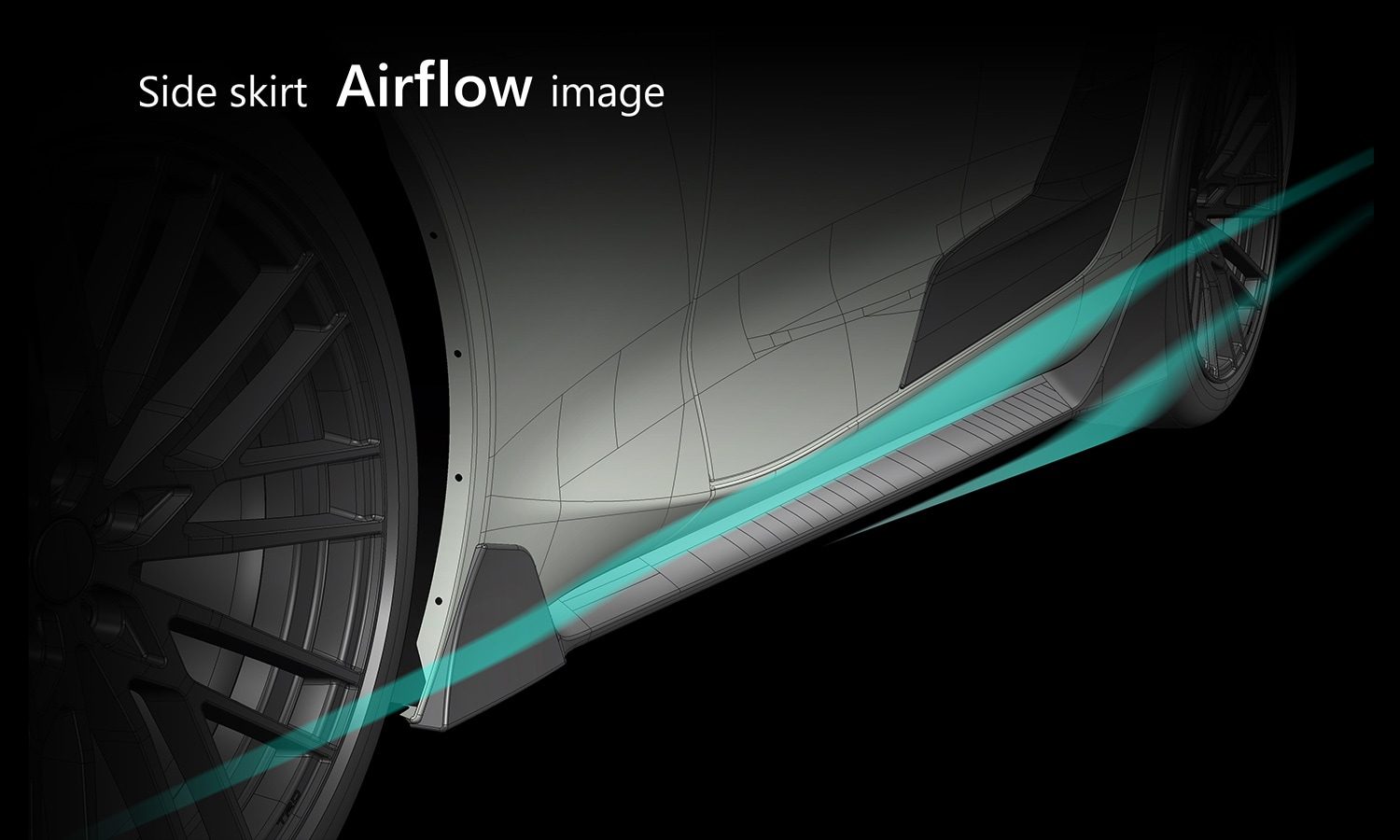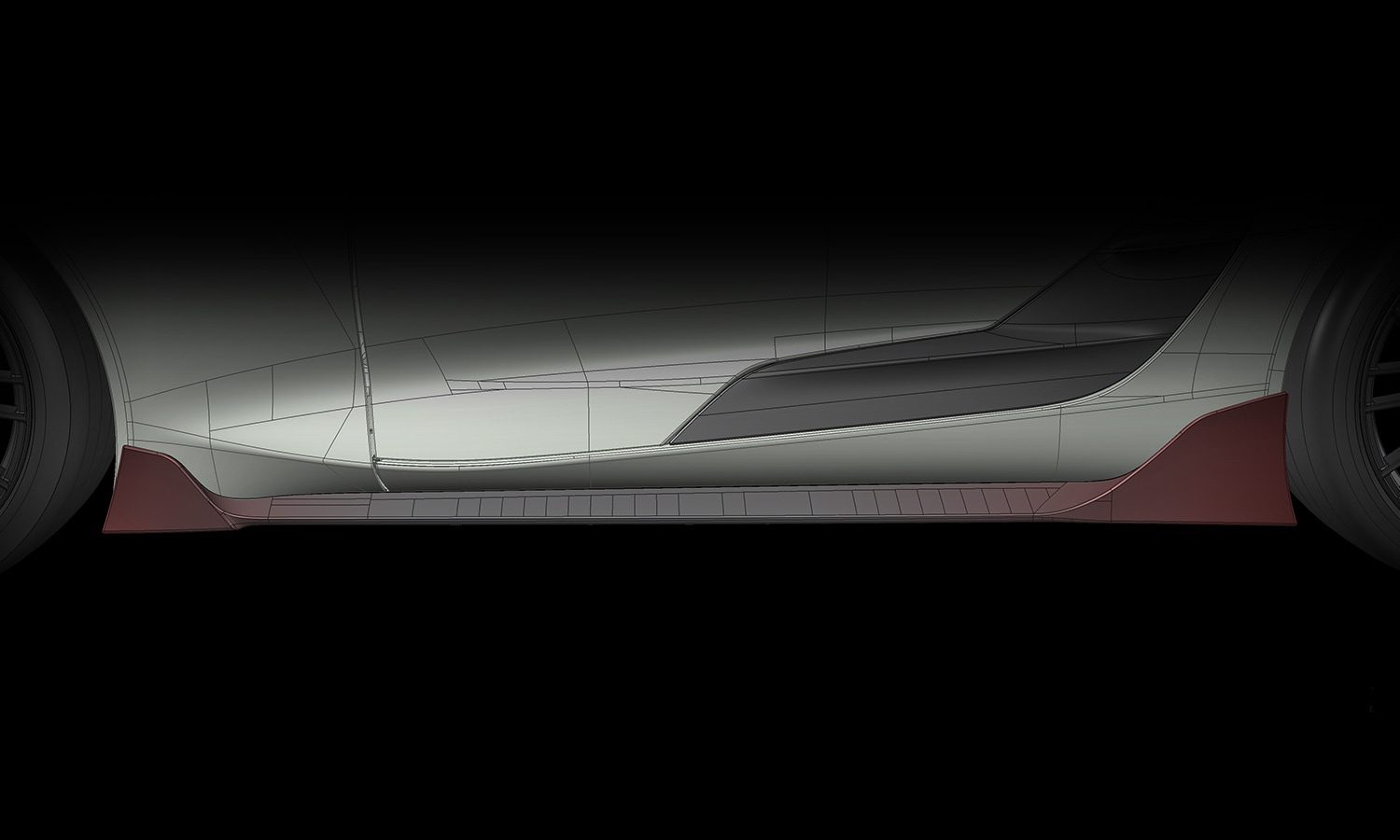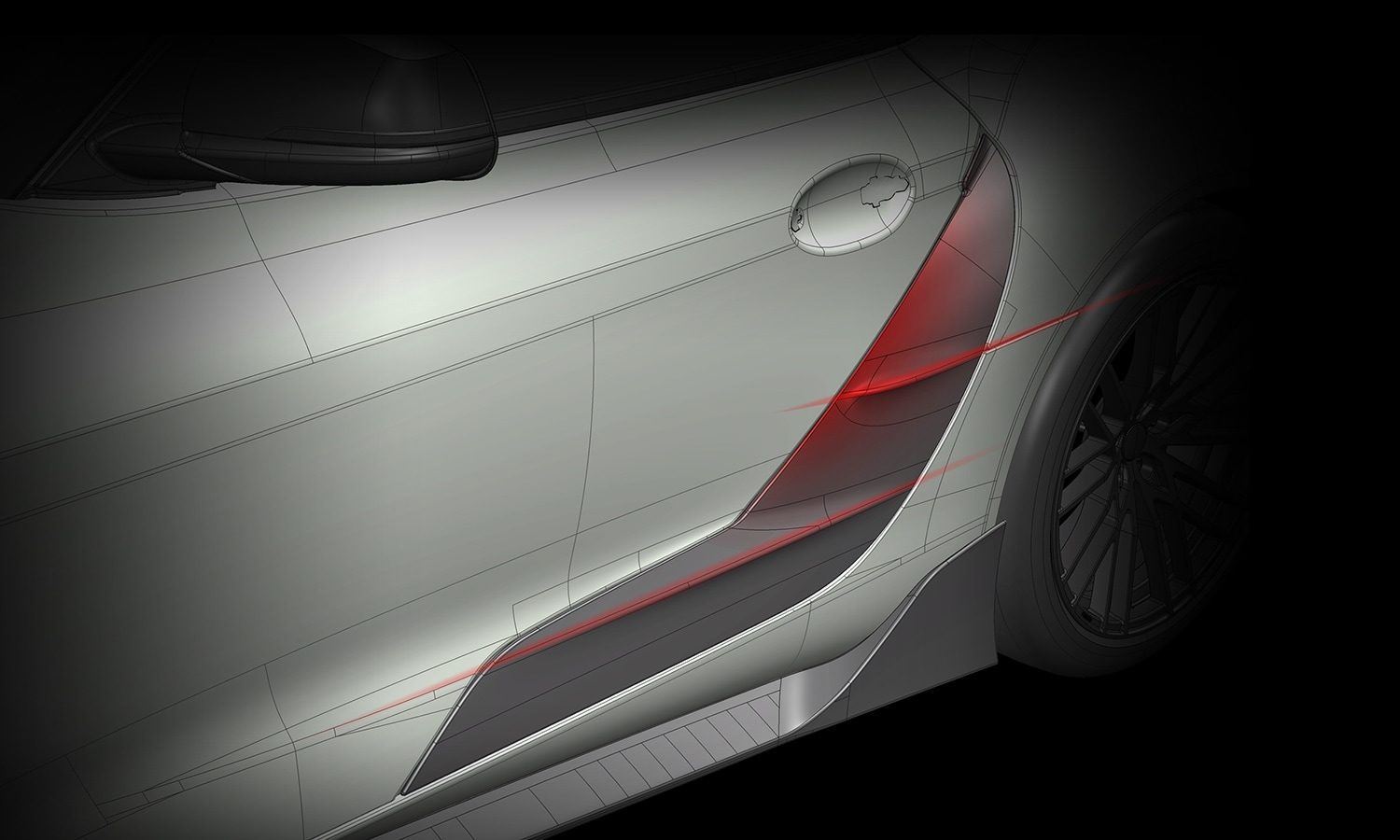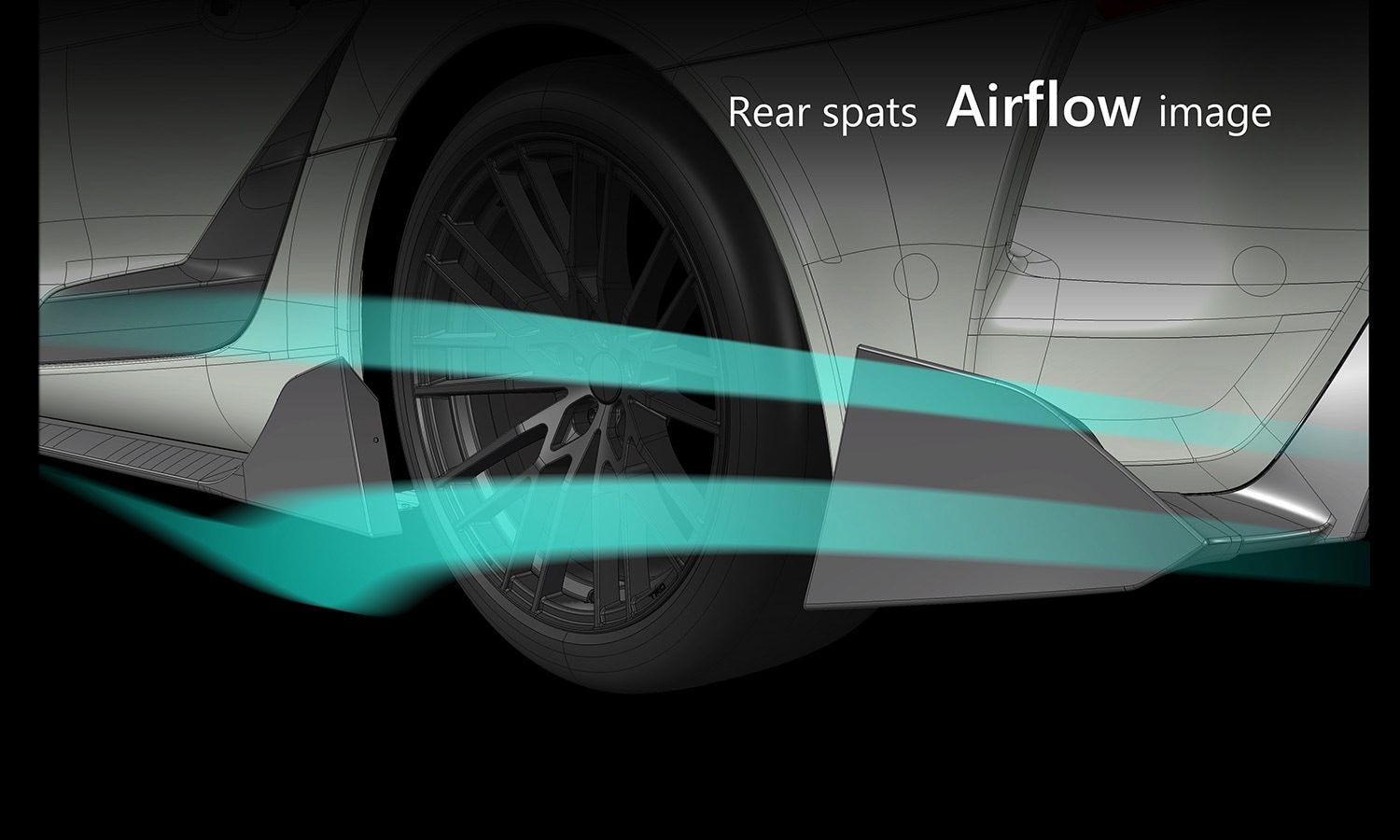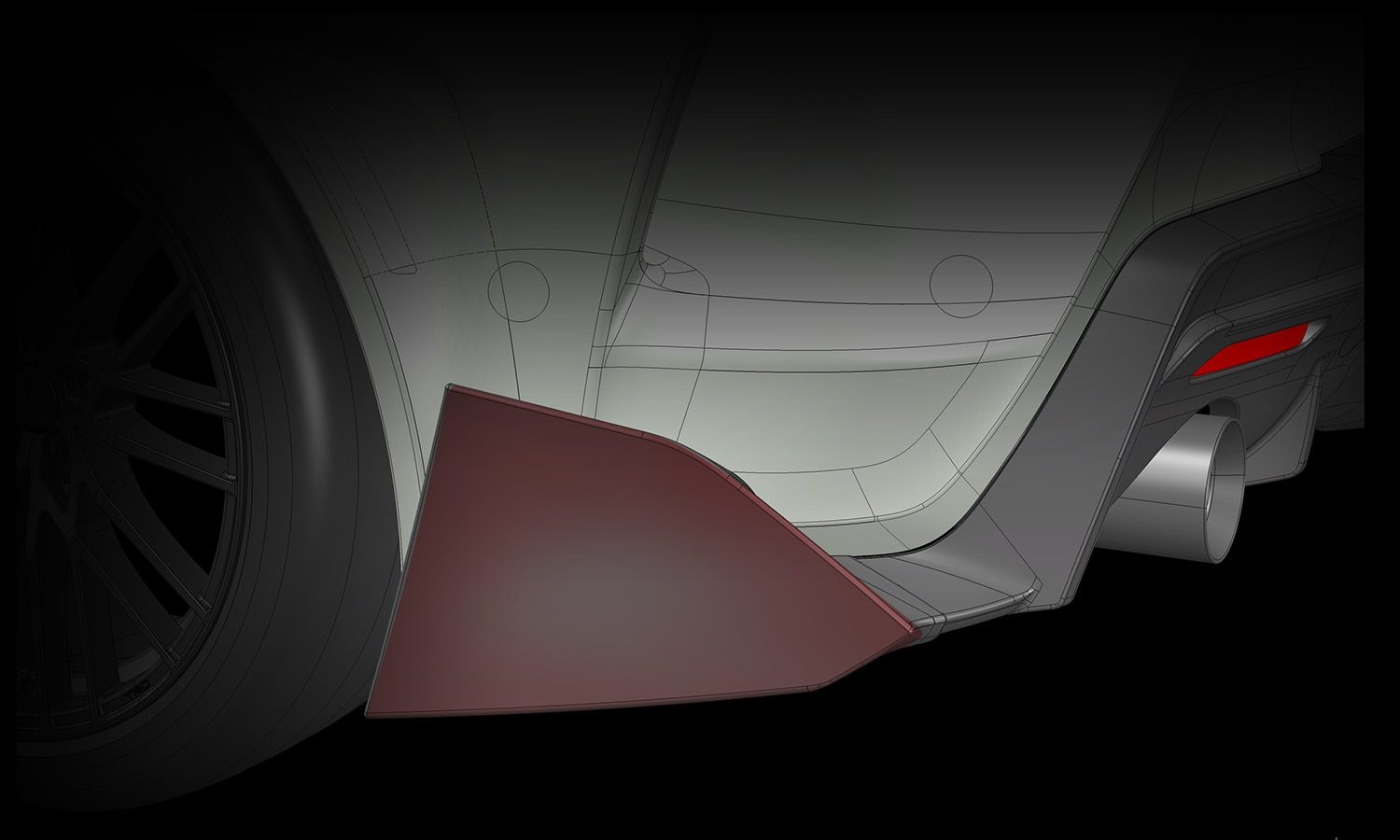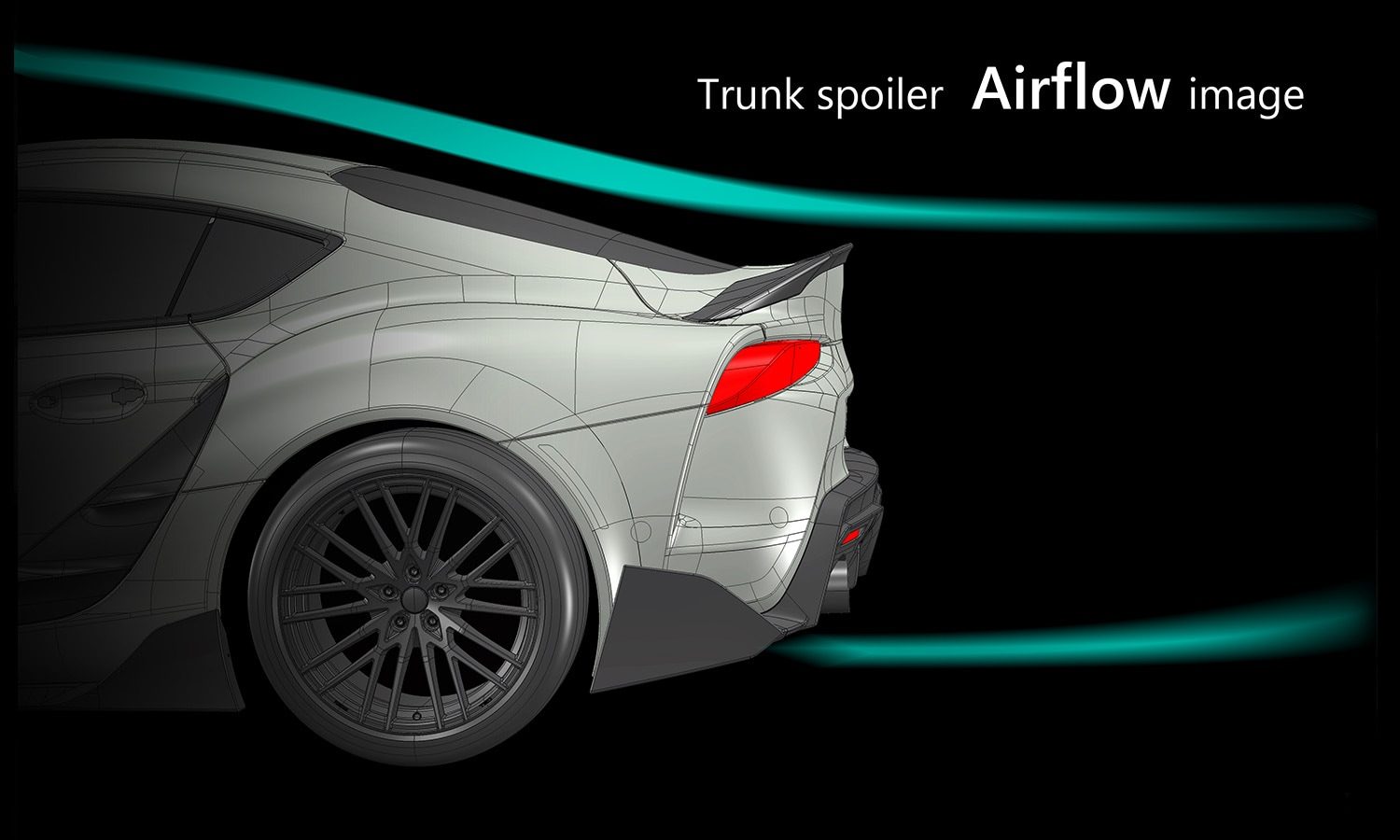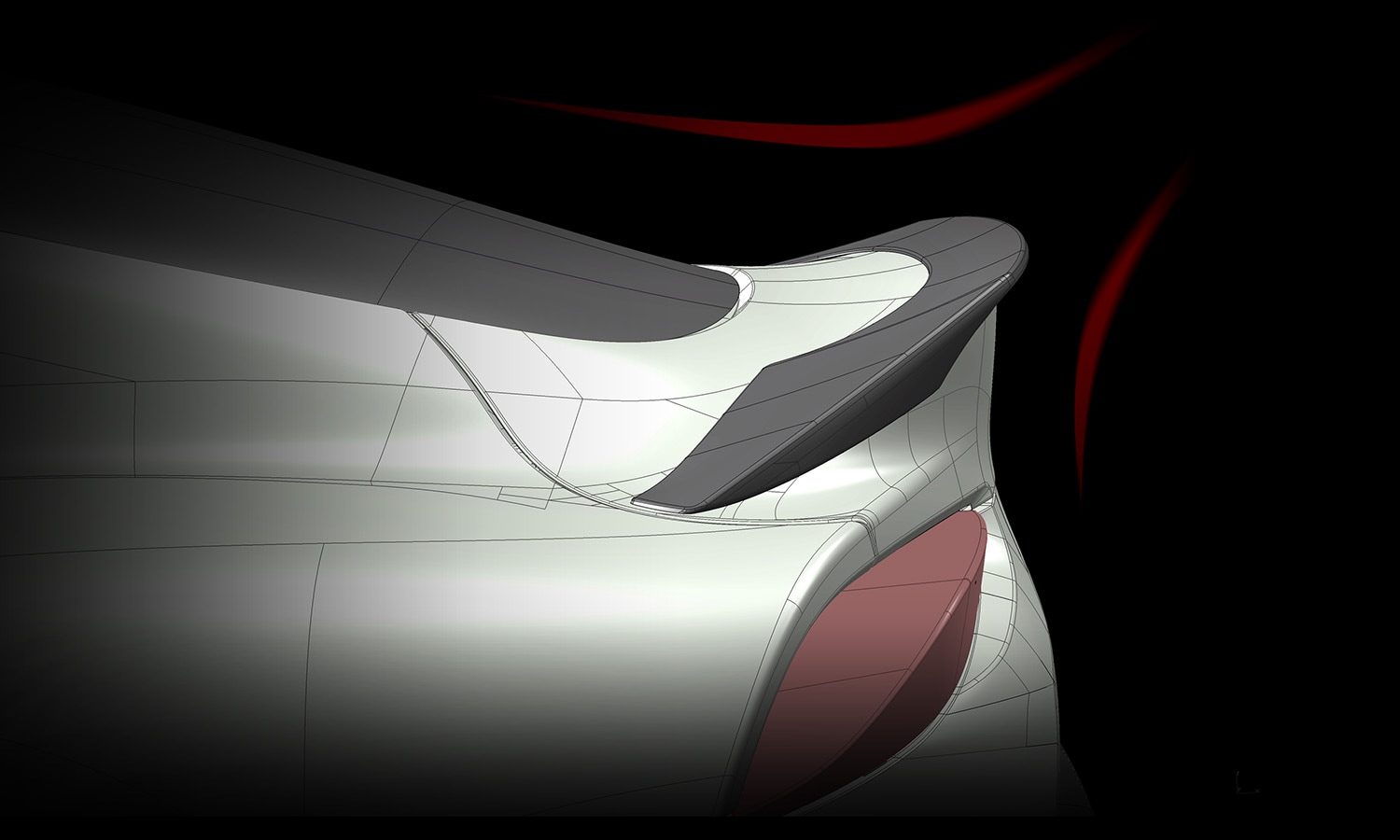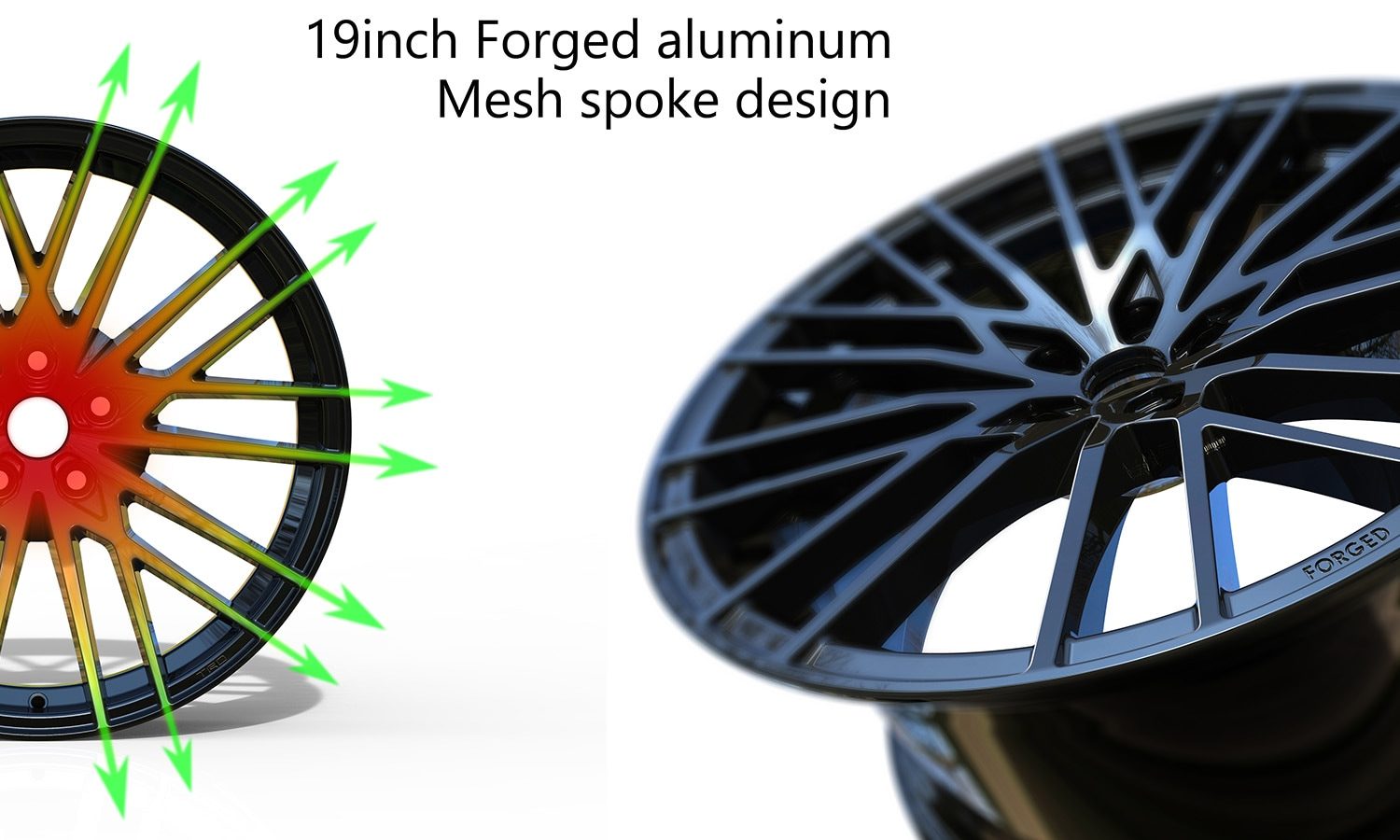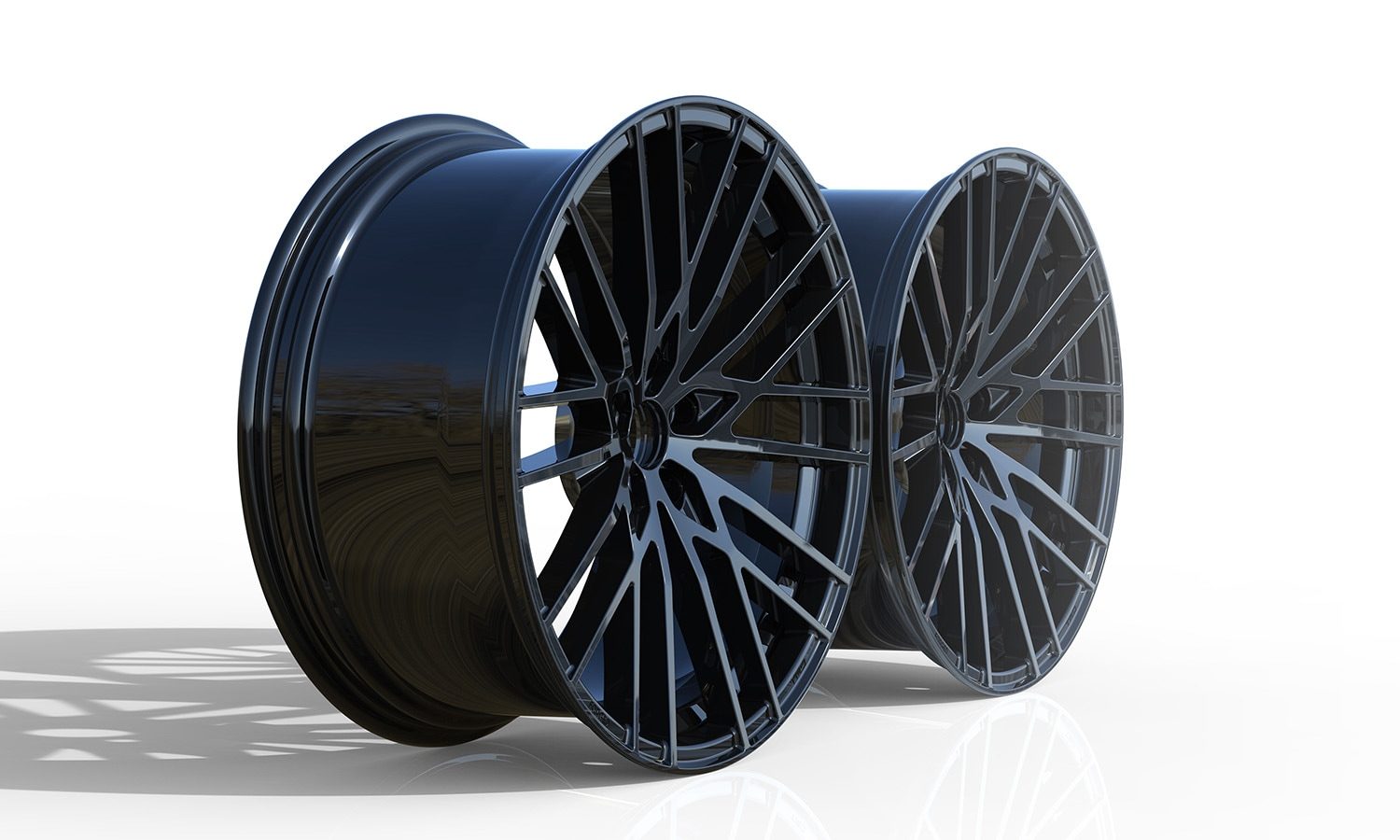Parts -
Front Spoiler
A front spoiler that follows the standard design and adopts a 3-piece structure.
By enlarging the left and right fin sizes, the
downforce is increased to reduce the lift-up at high speed running.
Side Skirt
Side skirt refined shape.
By designing the lower surface to be enclosed with carbon, it
produces a low center of gravity form while enhancing the rectification effect on the side of the vehicle.
Door Garnish
Door garnish to replace from standard decoration.
By replacing it, the carbon constructs a curved surface and fins that attract the eye.
The running wind of the side of the vehicle is rectified to suppress the occurrence of turbulence and flow to the rear end without disturbance.
Rear Spats
Rear spats add on to standard parts.
Refine the shape and size of the rear end fins and
smoothly guide the running wind to the rear of the rear bumper to improve the rear stability.
Trunk Spoiler
A trunk spoiler that balances the aerodynamic balance before and after the vehicle.
By installing a large number of powerful aerodynamic parts
, adjust the front-rear aerodynamic balance of the front tendency excessive tendency.
By shaping it to extend to the rear without jumping up, it brings out an
extended form and a flat ride drive feel.
19 inch Forged aluminum Wheel
Forged 19 inch aluminum wheels adopting large cone cube shape.
By adopting TRD analysis and forging manufacturing method,
delicate mesh spoke design and robust rigidity are compatible. Not to
mention improve steering response and straight running stability,
take care not to damage high-quality feeling by eliminating unpleasant squeaking noises etc. at the time of braking.
By shortening the distance between the spoke end and the hub as much as possible,
we further emphasize the proportion in which FR-like intonation was effective.




